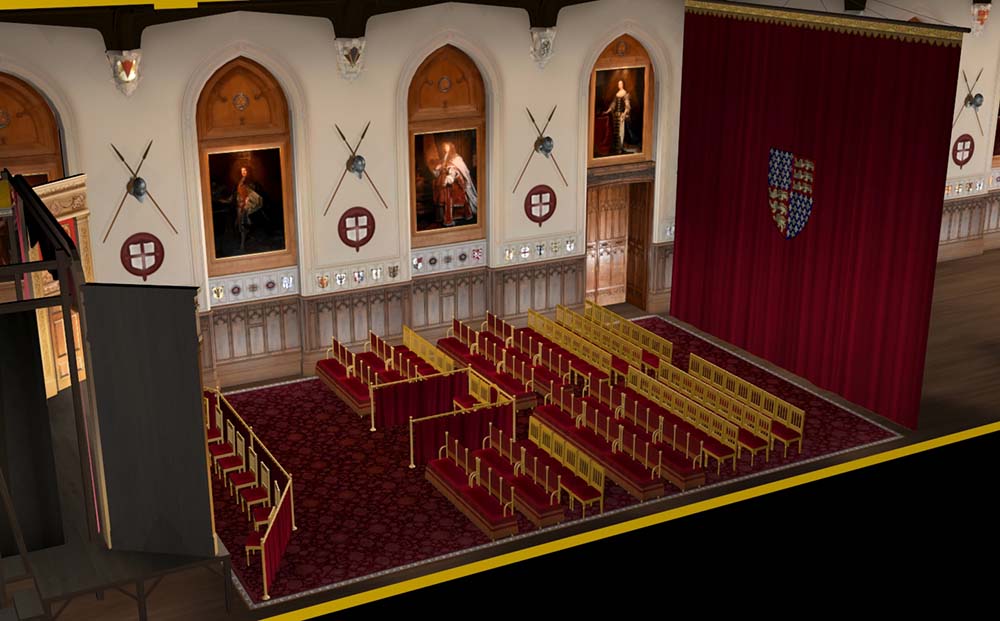Richard II is an unexpected play to find such royal favour, focusing on the overthrow of a rightful king by a usurper. Yet Victoria seemed to find something almost uniquely engaging about this play and this production.
Kean was famously fastidious about 'historical accuracy', commissioning elaborate set designs based on detailed historical research. His single deviation in Richard II was the decision to set the final scene at St George’s Hall, Windsor Castle.
In making this change, Kean aligned Shakespearean history with the contemporary royal family, an alignment Victoria herself endorsed: the first performance took place in St George’s Hall itself.
A month later, the setting was carefully reproduced in painted scenery when the production opened at the Princess’s Theatre.


.tiff/full/372,/0/default.jpg)








